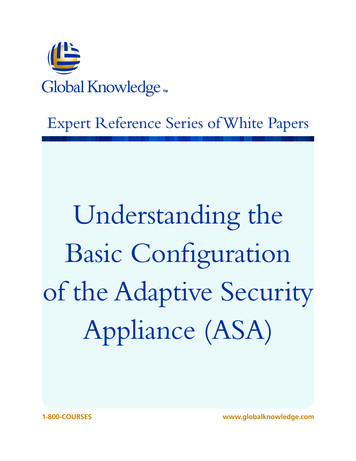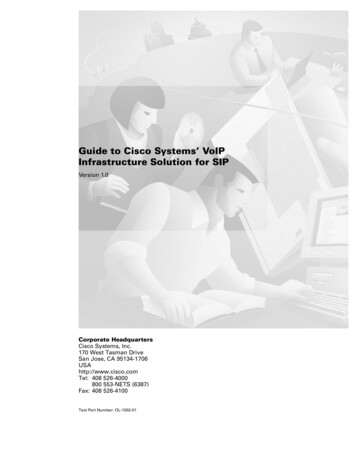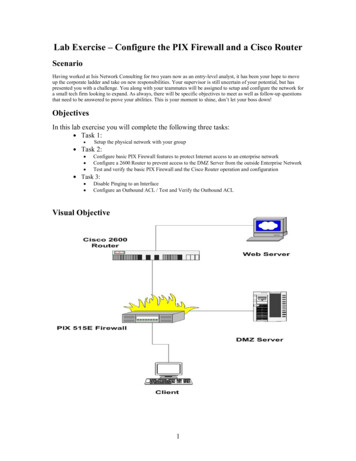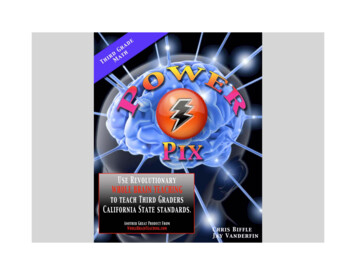
Transcription
Third Grade Power Pix Math, copyright 2009, Chris Biffle and Jay VanderfinChris BiffleJay VanderfinWholeBrainTeachng.com2
Third Grade Power Pix Math, copyright 2009, Chris Biffle and Jay VanderfinIntroduction4Third Grade Power Pix Math Overview6Third Grade Power Pix Math Reference list18Third Grade Math Power Pix Signs72Copyright and Contact Information131All rights reserved. Copies of this document may be reproduced for use by individual teachers. However, noportion of this document may be sold, or offered for sale, without the written permission of the authors.3
Third Grade Power Pix Math, copyright 2009, Chris Biffle and Jay VanderfinA significiant quantity of brain research demonstrates that we learn best by seeing, saying, hearing anddoing. When we see information, we employ the visual cortex near the rear of the brain; when we say and hearinformation, the language centers, Broca’s area and Wernicke’s area in the brain’s left hemisphere are active.When we engage in a physical learning activity we employ the motor cortex, our most reliable memory storagearea, located in a band across the top, center of the brain.Not every learning activity, however, employs all four learning modes. In fact, the most common teachingmodel, the instructor talking and students listening, is judged by contemporary brain science as the most inefficientway for the brain to acquire new information. Put bluntly, the longer we talk, the more students we lose. What weneed in education, from kindergarten through college, are teaching materials and pedagogical styles that aredesigned for whole brain instruction. Since 1999, I and my teaching colleagues have been developing andclassroom testing brain friendly learning modules. We want our students to see, say, hear and do we want themto experience the joy and power of learning with their whole brains. Power Pix, as you will see, employ all fourlearning modes, and are designed to solve a very practical problem, how to teach the state standards in languagearts and math (this edition is designed for the California State Standards but can be used by teachers in any state.)In 1999, my former student Jay Vanderfin and I began to search for a way to make learning more engaging.I had some success in my college courses using diagrams to teach complex philosophical topics; Jay was seekingan entertaining technique for teaching the California State Standards to his kindergarteners.4
Third Grade Power Pix Math, copyright 2009, Chris Biffle and Jay VanderfinIn addition to philosophy, I had also taught art history; I was astonished at my students’ ability to attach thecorrect titles and painters to hundreds of paintings. My classes could process and retain huge quantities of visualinformation but had significant trouble remembering five or ten dates of important historical events. However,when I created a series of memory gestures to accompany the dates, their learning improved dramatically. As Irelated these experiences to Jay, we both became convinced that the solution to the serious problem of teachingCalifornia State Standards had to reside in some combination of visual, auditory, oral and physical learning.And so we set forth on a remarkable journey.We were looking for something that we had never seen before, a multi-modal pedagoguey that teacherscould apply to any educational core concept. As we experimented with solutions and researched methods oflearning, we eventually learned to call our approach “a whole brain learning method.” We were delighted to seehow the visual cortex, auditory cortex, sensory motor cortex, even the amygdala (which processes pleasure andpain) and limbic system (the seat of emotions) were involved in the system we were creating.Jay and I, and our colleague, Chris Rekstad, a fourth grade teacher at Valley Elementary in Yucaipa, gavecountless seminars to Southern California teachers, showing rough drafts of our approach . and we wereastonished at the enthusiastic reception we received. We gave away samples of our materials by the box load, over10,000 pages, to teachers who were eager to try our strategies.Over the last five years, we’ve had a tremendous amount of constructive feedback and have carefully honedand classroom tested the materials you are about to investigate.5
Third Grade Power Pix Math, copyright 2009, Chris Biffle and Jay VanderfinThird Grade Power Pix Math OverviewThis booklet is devoted to 60 math concepts for Third Graders. The concepts are (in alphabetical order):Math1s, 10s, 100s, 1000s, 10000s place, bar graph, big slice rule, centimeter, circle, cone,counting by 100s, counting by 1000s, cube, cup, cylinder, decimal point, denominator,dividing by 1 rule, dividing by zero rule, division, division checking rule, equilateral triangle,estimate, expanded form, fraction, gallon, hexagon, isosceles triangle, less than/more thanrule, little slices rule, meter, multiplication, multiplication checking rule, multiplying by 1 rule,multiplying by zero rule, numerator, numerator equals denominator rule, octagon, one fourth,one half, one third, parallel lines, pentagon, perimeter, pint, point 1, point 5, point 75,pyramid, quart, rectangle, right angle, right triangle, rounding off rule, sphere, square, totalcost, triangle, unit cost, unit cost ruleVirtually every Third Grade teacher in the country mentions some or all these concepts. If you putyourself in the shoes of a youngster new to school, many of these terms would be no more familiar than oddities ofShakespearean English are to adult readers. Hamlet says, “Who would fardels bear when he could his quietusmake with a bare bodkin?” If Hamlet’s meaning is unclear to you, then imagine a first grader’s confusion when theteacher says, “Every fraction has a numerator and a denominator.” Our classroom tested materials, called PowerPix, enormously simplify the task of teaching these, and many other, core concepts.Power Pix are pictures used to represent and teach California State Standards. Each Power Pix should beprinted on a sheet of computer paper. The picture represents the California State Standard; teaching resources for6
Third Grade Power Pix Math, copyright 2009, Chris Biffle and Jay Vanderfineach Power Pix are in the Power Pix Reference List in this manual. Teachers hold up the Power Pix in the front oftheir classroom and teach the concept and related memory gesture. After students have repeated the concept andpracticed the gesture, the Power Pix is placed on a classroom wall for frequent review.Typically, students can master over 100 Power Pix in a year! Power Pix are an entertaining, effective wayfor students to acquire large quantities of core knowledge.On the following pagea are a sample Pix and its reference list information7
Third Grade Power Pix Math, copyright 2009, Chris Biffle and Jay VanderfinSample: Power Pix for authorCalifornia StateStandard (Reading3.2)PicturerepresentingstandardKey word instandard (for easeof reading bystudents, syllablesare color coded)Gesture for keyword:(Pretend as if youare writing in theair.)Blue borderidentifies languagearts; red borderidentifies math.8Prompt question: What is an author?Answer: An author writes the wordsof a book, story or poem.Grade Level: First Grade
Third Grade Power Pix Math, copyright 2009, Chris Biffle and Jay VanderfinSample: Power Pix Reference for author.authorQuestion: What is an author?Answer: An author writes the words of a book, story or poem.Gesture: Pretend as if you were writing in the air.California State First Grade Standard: Reading 3.2: Describe the roles of authors and illustrators and theircontributions to print materials.Teaching suggestion: Hold up books and describe the tasks of an author. Play Yes/No Way! with questions likethe following:1. Does this have an author? (Hold books and also “non-author” materials, like chalk, erasers, etc.)2. Does every book have an author?3. Is this the author gesture? (Make various gestures.)Quick Test: Play Cutie with statements like the following:1. Authors write books.2. A girl or a boy could be an author.3. Authors write poems.Critical Thinking: Play Compare/Contrast with author and other Power Pix.Review: Ask your students to review with each other the question, answer and gestures for author and other PowerPix.(For more information on all the above, see the introduction to this manual.)9
Third Grade Power Pix Math, copyright 2009, Chris Biffle and Jay VanderfinPower Pix employ all four of the brain’s learning modes:--Visual (visual cortex): students learn by looking at a picture representing a concept.--Auditory (Wernicke’s area): students hear the definition of the concept.--Verbal (Broca’s area): students say the definition of the concept to themselves and their classmates.--Kinesthetic (motor cortex): students practice a memory gesture associated with the concept.In addition, Power Pix can be used to develop critical thinking skills which bring together the frontal cortex(reasoning), the hippocampus (memory formation) and the language centers (Wernicke’s area and Broca’s area):--Paraphrasing: after learning the definition of a concept by rote, students can paraphrase the definition byexplaining it to their neighbors.--Comparison/Contrast: students can talk and write about similarities and differences among Power Pix.--Connective Thinking: students can talk and write about connections between the concepts and their experienceoutside the classroom.Finally, Power Pix are ideally suited for collaborative learning. Looking at Pix placed on the wall, studentsreview what they have learned in teams of two. One student asks the question represented by the picture, “What isan author?”; the other student gives the answer, “An author writes the words of a book, story or poem.” When the10
Third Grade Power Pix Math, copyright 2009, Chris Biffle and Jay Vanderfinfirst student has finished reviewing all the Pix, the students switch roles. The questioner becomes the answerer; theanswerer becomes the questioner.Four Steps for Teaching Third Grade Power PixWe believe the best way to teach Power Pix is to use a graduated program like the following:Step One: Show your students the picture and teach them the concept (for example, author) and the gesturefrom the Power Pix Reference List (writing in the air with an imaginary pencil). Put the Power Pix on the wall;review the concept and gesture frequently for at least a week.Step Two: When your class has mastered the concept and gesture, use the Power Pix Reference List toteach them the question (What is an author?) and the answer (An author writes the words of a book, story orpoem). For additional learning aids, see the Teaching Suggestion for each Power Pix in the Power Pix ReferenceList.Step Three: After several weeks of reviewing the concept, gesture, question and answer, you’re ready toassess your students’ understanding.The Power Pix Reference List contains two simple assessment games designed for each Power Pix,Yes/No Way! and Cutie.11
Third Grade Power Pix Math, copyright 2009, Chris Biffle and Jay VanderfinYes/No Way!This game provides a rapid evaluation of your students’ understanding without using a pencil and paper test!Simply ask your class questions about a Power Pix that can be answered Yes, or No Way! The Power PixReference List contains at least three Yes/No Way! questions for each Pix.Here are the Yes/No Way! questions for the author Power Pix above.1. Does this have an author? (Hold up books and also “non-author” materials, like chalk, erasers, etc.)2. Does every book have an author?3. Is this the author gesture? (Make various gestures.)Ask your class these and other questions about the Power Pix.Tell your students to answer the questions inchorus, either Yes!, or No Way!. Students should be encouraged to pump their fist vigorously when saying Yes!, orshake one finger in emphatic negation (as if exclaiming “No! No! No!”) when saying “No Way!” As studentsrespond in chorus, you can quickly determine how many in your class understood the Power Pix concept.CutieYes/No Way! is a rapid meaasure of all your students’ understanding of a Power Pix. Cutie evaluates theunderstanding of individual students.Cutie is a quick test, abbreviated QT and thus pronounced “Cutie.”12
Third Grade Power Pix Math, copyright 2009, Chris Biffle and Jay VanderfinWhen you say “Cutie!,” your students respond “Cutie!” and close their eyes. Next, you make statementsabout the Power Pix concept that are either true or false. When the statement is true, students, still with their eyesclosed, raise their hands. When the statement is false, they keep their hands down. Cutie is a remarkably powerfulassessment of individual understanding which, like Yes/No Way!, does not require a pencil/paper test. You can tellsimply by looking at the show of hands how many of your students understood the Power Pix lesson. The PowerPix Reference List contains at least three Cutie statements for each Pix.Here are the Cutie statements for the author Power Pix above.1. Authors write books.2. A girl or a boy could be an author.3. Authors write poems.Step Four: When your students have mastered the concept, the gesture, question, answer, and successfully passedthe assessments, have them play Compare/Contrast and then engage in the Review activities described below.Compare/ContrastDescribing similarities and differences between core concepts is an important, higher order thinking activitythat should be practiced at every level of instruciton. After the Power Pix concept is understood, students shouldtalk to each other about the similarities and differences they see between one concept and others they have learned.When students explain comparisons to each other, they should lace their fingers together; when they describe13
Third Grade Power Pix Math, copyright 2009, Chris Biffle and Jay Vanderfindifferences they should bump their closed fists together. These visual cues reinforce, and make entertaining,comparing (fingers laced together) and contrasting (fists bumping each other.)For a sample demonstration of this comparison and contrast activity, see a video of Jay Vanderfin and hisfourth graders at:WholeBrainTeaching.comReviewStudents should be encouraged to frequently rehearse the questions, answers and gestures for the PowerPix they have learned. This review can take a variety of formats: One student makes a Power Pix gesture; his/her partner states the appropriate Power Pix Question andAnswer. One student asks a Power Pix Question; his/her partner states the Power Pix Answer. The teacher makes a Power Pix gesture and students give the Answer and/or the Question. The teacher states a Power Pix Question and/or Answer and the students make the appropriate Power Pixgesture. During a timed trial (typically one minute) students work individually or in teams to state as many PowerPix Questions and/or Answers and/or Gestures as possible.14
Third Grade Power Pix Math, copyright 2009, Chris Biffle and Jay VanderfinNote that in a procedure like steps we have outlined, your students move from relativelysimpler tasks, linking a word, picture and gesture to more intellectually complex tasks, inventingtheir own comparisions and contrasts that create new associations in information they’ve learned. Ifyou follow our suggestions, lower order thinking skills involving the speech, motor and visualcenters of the brain lay the foundation for higher order thinking skills involving memory and theprefrontal cortex. You’ll find students amaze themselves, and you, at the amount of informationthey are able to retain and organize. What are Power Pix? Whole brain learning at its mostefficient!Additional SuggestionsBecause Power Pix are the foundation of what students need to know in elementary school,they should be incorporated into as many parts of the curriculum as possible. As you will see, PowerPix can be used in very brief lessons (often no more than one minute) to not only teach core conceptsbut also to reinforce other important areas of instruction.As you teach each Power Pix, place it on the wall. Whenever you wish, use this wall for aconvenient and rapid review of any or all the material you have covered.15
Third Grade Power Pix Math, copyright 2009, Chris Biffle and Jay Vanderfin Point at various Pix and ask, “What is this?’ Students chorus in complete sentences, “That is a ” (author, period, uppercase letter, etc.) Point at various Pix and say, “Name this Pix and make the gesture!” Point at various Pix and say, “Name it! What is the question?! What is the gesture?! What isthe answer?!” Tell your students, “Turn to your neighbor, take turns pointing to the Pix and, as quickly as youcan, say the question each picture represents.” Make the gesture for a Pix, for example, writing in the air. Your students mirror your gestureand then say in chorus what the gesture represents, “That is an author!” As part of “quiet time” stand in front of the Pix wall, point at each Pix, silently make thegesture. Your students silently mirror your gestures.If you are wondering why your students should be spending so much time, in so many ways,involved with Power Pix, the answer is simple. Power Pix are nothing but visual representations ofcore knowledge. Millions of dollars of grants and countless hours of research have been spent inidentifying the fundamental components of a students’ k-6 education. The more familiar your16
Third Grade Power Pix Math, copyright 2009, Chris Biffle and Jay Vanderfinstudents are with Power Pix and their interconnections with the major areas of your curriculum, themore successful they will be in your class and in the rest of their school experience.17
Third Grade Power Pix Math, copyright 2009, Chris Biffle and Jay Vanderfin(alphabetical order)18
Third Grade Power Pix Math, copyright 2009, Chris Biffle and Jay Vanderfin1s placeQuestion: What is the 1s place?Answer: The first number on the right is the 1s place.Gesture: Hold up five fingers on one hand. With the other hand, grab the first finger on the right and wiggleit.California State Third Grade Math Standard: Number Sense 1.3: Identify the place value for each digit innumbers to10,000.Teaching Suggestion:(Teach 1s place, 10s place, 100s place, and 1000s place together.) Whileyour students are involved in individual or group tasks, write a list of numbers on the board and explain theconcept of the 1s place. Play Yes/No Way! with one or more questions like the following:1. Is this the 1s place? (Point at various numbers on the board.)2. Is the 1s place the first number on the right?3. Is this the 1s place gesture? (Make various gestures.)4. Is the 1s place the first number on the left?Quick Test: Play Cutie with statements like the following:1. In the number 21, the number 2 is in the 1s place.2. In the number 9, the 9 is in the 1s place.3. The 1s place is the first number on the right.Critical Thinking: Play Together/Apart with the 1s place and other Power Pix.Review: Ask your students to review with each other the question, answer and gestures for the 1s place andother Power Pix.(For more information on all the above, see the introduction to this manual.)10s placeQuestion: What is the 10s place?Answer: The second number from the right is the 10s place.Gesture: Hold up five fingers on one hand. With the other hand, grab the second finger from the right andwiggle it.19
Third Grade Power Pix Math, copyright 2009, Chris Biffle and Jay VanderfinCalifornia State Third Grade Math Standard: Number Sense 1.3: Identify the place value for each digit innumbers to 10,000.Teaching Suggestion:(Teach 1s place, 10s place, 100s place, and 1000s place together.) While yourstudents are involved in individual or group tasks, write a list of numbers on the board and explain the conceptof the 10s place. Play Yes/No Way! with one or more questions like the following:1. Is this the 10s place? (Point at various numbers on the board.)2. Is the 10s place the first number on the right?3. Is this the 10s place gesture? (Make various gestures.)4. Is the 10s place the second number from the left?Quick Test: Play Cutie with statements like the following:1. In the number 42, the number 4 is in the 10s place.2. In the number 34, the 4 is in the 10s place.3. The 10s place is the second number from the right.Critical Thinking: Play Together/Apart with the 10s place and other Power Pix.Review: Ask your students to review with each other the question, answer and gestures for the 10s place andother Power Pix.(For more information on all the above, see the introduction to this manual.)100s placeQuestion: What is the 100s place?Answer: The third number from the right is the 100s place.Gesture: Hold up five fingers on one hand. With the other hand, grab the third finger from the right andwiggle it.California State Third Grade Math Standard: Number Sense 1.3: Identify the place value for each digit innumbers to 10,000.Teaching Suggestion:(Teach 1s place, 10s place, 100s place, and 1000s place together.) While yourstudents are involved in individual or group tasks, write a list of numbers on the board and explain the conceptof the 100s place. Play Yes/No Way! with one or more questions like the following:1. Is this the 100s place? (Point at various numbers on the board.)20
Third Grade Power Pix Math, copyright 2009, Chris Biffle and Jay Vanderfin2. Is the 100s place the third number from the right?3. Is this the 100s place gesture? (Make various gestures.)4. Is the 100s place the first number from the right?Quick Test: Play Cutie with statements like the following:1. In the number 321, the number 3 is in the 100s place.2. In the number 431, the number 3 is in the 100s place.3. The 100s place is the third number from the right.Critical Thinking: Play Together/Apart with the 100s place and other Power Pix.Review: Ask your students to review with each other the question, answer and gestures for the 100s placeand other Power Pix.(For more information on all the above, see the introduction to this manual.)1,000s placeQuestion: What is the 1,000s place?Answer: The 1000s place is the fourth number from the right.Gesture: Hold up five fingers on one hand. With the other hand, grab the fourth finger from the right andwiggle it.California State Third Grade Math Standard: Number Sense 1.3: Identify the place value for each digit innumbers to 10,000.Teaching Suggestion:(Teach 1s place, 10s place, 100s place, and 1000s place together.) Whileyour students are involved in individual or group tasks, write a list of numbers on the board and explain theconcept of the 1000s place. Play Yes!/No Way! with one or more questions like the following:1. Is this the 1000s place? (Point at various numbers on the board.)2. Is the 1000s place the third number from the right?3. Is this the 1000s place gesture? (Make various gestures.)4. Is the 1000s place the fourth number from the right?Quick Test: Play Cutie with statements like the following:1. In the number 4,321, the number 4 is in the 1000s place.2. In the number 5,431, the number 1 is in the 1000s place.21
Third Grade Power Pix Math, copyright 2009, Chris Biffle and Jay Vanderfin3. The 1000s place is the fourth number from the right.Critical Thinking: Play Together/Apart with the 1000s place and other Power Pix.Review: Ask your students to review with each other the question, answer and gestures for the 1000s placeand other Power Pix.(For more information on all the above, see the introduction to this manual.)10,000s placeQuestion: What is the 10,000s place?Answer: The 10,000s place is the fifth number from the right.Gesture: Hold up five fingers on one hand. With the other hand, grab the fifth finger from the right andwiggle it.California State Third Grade Math Standard: Number Sense 1.3:Identify the place value for eachdigit in numbers to 10,000.Teaching Suggestion:(teach 1s place, 10s place, 100s place, 1000s place, and 10,000s placetogether) Write numbers on the board and explain the concept of the 10,000s place. Play Yes/No Way! withone or more questions like the following:1. Is this the 10,000s place? (Point at various numbers on the board.)2. Is the 10,000s place the third number from the right?3. Is this the 10000s place gesture? (Make various gestures.)4. Is the 10,000s place the fifth number from the right?Quick Test: Play Cutie with statements like the following:1. In the number 14,321, the number 4 is in the 10,000s place.2. In the number 25,431, the number 2 is in the 10,000s place.3. The 10,000s place is the fifth number from the right.Critical Thinking: Play Together/Apart with the 10,000s place and other Power Pix.Review: Ask your students to review with each other the question, answer and gestures for the 10,000splace and other Power Pix.(For more information on all the above, see the introduction to this manual.)22
Third Grade Power Pix Math, copyright 2009, Chris Biffle and Jay Vanderfinbar graphQuestion: What is a bar graph?Answer: A bar graph compares numbers using bars.Gesture: Put your two forearms straight up, one higher than the other, as if they were unequal bars on a bargraph.California State Third Grade Math Standard: Statistics, Data Analysis and Probability, 1.3 Summarizeand display the results of probability experiments in a clear and organized way (e.g., use a bar graph or a lineplot).Teaching Suggestion:Show students examples of bar graphs and how the height of the bar representsthe size of a number. Play Yes/No Way! with one or more questions like the following:1. Is this number larger than this one? (Pointing at various bars on a bar graph.)2. Does this bar mean ? (Point at graphs, and ask students about the amount various bars represent.)3. Is this amount less than this amount? (Ask students to compare two bars on a bar graph.)4. Is this the bar graph gesture? (Make various gestures.)Quick Test: Play Cutie with statements like the following:1. Bars on a bar graph stand for numbers.2. On a bar graph, a tall bar represents a small number.3. On a bar graph, a short bar represents a small number.4. Is this the bar graph gesture? (Make various gestures.)Critical Thinking: Play Together/Apart with bar graph and other Power Pix.Review: Ask your students to review with each other the question, answer and gestures for bar graph andother Power Pix.(For more information on all the above, see the introduction to this manual.)big slice rule (no picture available)Question: What is the big slice rule?Answer: The big slice rule is: one big slice can equal several little slices.Gesture: Pretend like you are eating one huge slice of pizza . wipe your chin when you are done because youmade a mess!23
Third Grade Power Pix Math, copyright 2009, Chris Biffle and Jay VanderfinCalifornia State Third Grade Math Standard: Number Sense 3.1 Compare fractions represented bydrawings or concrete materials to show equivalency and to add and subtract simple fractions in context (e.g.,1 2 of a pizza is the same amount as 2/4 of another pizza that is the same size; show that 3/8 is larger than1/2).Teaching Suggestion:(teach the little slices rule and the big slice rule together) While your studentsare involved in individual or group projects, make drawings on the board of pizzas and other objects that canbe divided into fractions. Explain the concepts of fractions and wholes. Demonstrate that 1/2 is equal to 2/4and that 2/8 is equal to 1/4, etc. Play Yes/No Way! with one or more questions like the following:1. Are these parts together equal to this part? (Point at sections of your drawings.)2. Is 2/8 of a pizza equal to 1/4 of the same pizza? (Insert the names and quantities of other objects.)3. Is this part more than this part? (Insert “less than” and “equal to?”4. Is this the big slice rule gesture? (Make various gestures.)Quick Test: Play Cutie with statements like the following:1. The big slice rule is: one big slice can equal several little slices.2. The big slice rule is: several big slices can equal one little slice.3. Two fractions that have different numbers can be equal.Critical Thinking: Play Together/Apart with the big slice rule and other Power Pix.Review: Ask your students to review with each other the question, answer and gestures for the big slice ruleand other Power Pix.(For more information on all the above, see the introduction to this manual.)centimeterQuestion: What is a centimeter?Answer: 100 centimeters is a meter.Gesture: Hold your fingers close together, indicating the small size of a centimeter.California State Third Grade Math Standard: Measurement and Geometry 1.4 Carry out simple unitconversions within a system of measurement (e.g., centimeters and meters, hours and minutes).24
Third Grade Power Pix Math, copyright 2009, Chris Biffle and Jay VanderfinTeaching Suggestion:(Teach centimeter and meter together) Use a meter stick, foot rulers marked offin centimeters, and other measuring tools to teach students the concept of centimeter and meter. Explainthat an inch is longer than 2 centimeters. Play Yes/No Way! with one or more questions like the following:1. Is this pencil longer than a centimeter?2. Is a centimeter longer than a meter?3. Is a centimeter longer than an inch?4. Is this the centimeter gesture? (Make various gestures.)Quick Test: Play Cutie with statements like the following:1. A meter is 100 centimeters.2. A centimeter is 1/100 of a meter.3. Your hand is longer than a centimeter.Critical Thinking: Play Together/Apart with centimeter and other Power Pix.Review: Ask your students to review with each other the question, answer and gestures for centimeter andother Power Pix.(For more information on all the above, see the introduction to this manual.)circleQuestion: What is a circle?Answer: A circle is a round shape.Gesture: Using the thumb and forefinger of one hand, make a circle.California State Third G
to experience the joy and power of learning with their whole brains. Power Pix, as you will see, employ all four learning modes, and are designed to solve a very practical problem, how to teach the state standards in language arts and math (this edition is designed for the California State Standards but can be used by teachers in any state.)
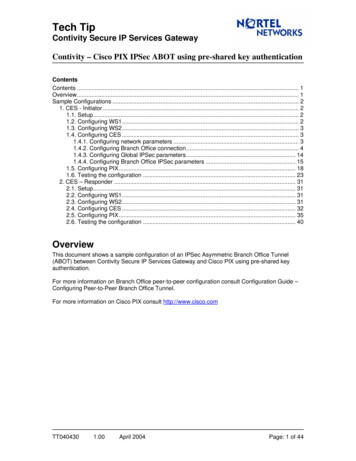
![PIX-55 Operation Manual [AJR-224503]](/img/55/amano-pix55.jpg)


